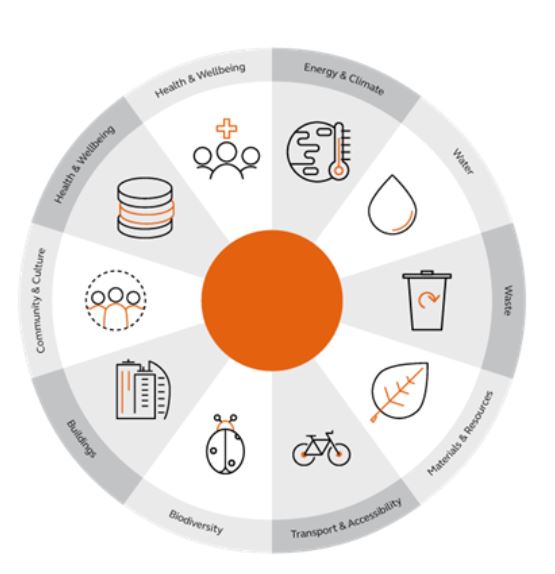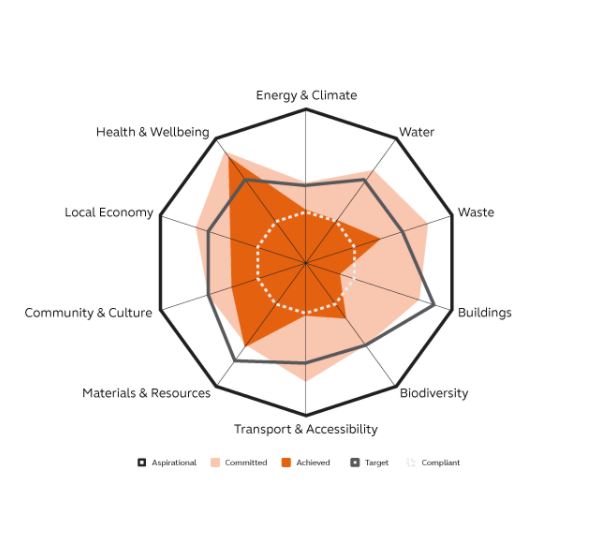Table of Contents
The challenge
Communities should be built in a way that reduces carbon impact, and contributes to long-term carbon reduction. But which actions will have the most impact?
10
Climate change affects us all. From water, waste, and energy, to community, culture, health and wellbeing, the principals of sustainability are becoming an increasingly important part of our lives. As we strive to be greener and more eco-aware – cutting our water consumption, saving energy, reducing waste, shopping locally – we also want to be sure that the principles of sustainability have informed every aspect of new development. But when a new development is still in the planning stages, how can we know which actions or interventions will have the greatest impact? This was the challenge facing Birmingham City Council when it was looking to bring forward its new Smithfield project.
The solution
Our Sustainability Target Assessment Rating (STAR) model creates a framework to define, assess and measure sustainability in a way that is bespoke to every project.
60%
In developing the masterplan for Smithfield, Birmingham City Council realized that new communities should be built in a way that not only reduces the carbon impact of development, but also actively contributes to wider and longer-term carbon reduction. This is where our Sustainability Target Assessment Rating (STAR) framework came in.
-
READ MORE
The framework was used by Birmingham City Council to help identify and achieve its sustainability priorities for Smithfield.
Developed as part of Arcadis’ Climate Response proposition, STAR provides a framework that assesses projects against 10 categories to develop and embed sustainability principles that are bespoke to that project. This provides a way to define, assess and measure sustainability throughout the project lifecycle, and is especially potent in informing design decisions.

Wheel showing the 10 categories assessed by the Arcadis Sustainability Target Assessment Rating model
Smithfield is one of the major growth locations in the heart of Birmingham and part of the council’s Big City Plan to grow the city centre by more than 25%. Yet Birmingham also has an ambitious target to reduce its carbon emissions by 60% by 2027. The council needed to ensure that these two ambitions worked together, and Smithfield was identified as an ideal testing ground for creating a “sustainable, green and inclusive place that has people at the heart of a zero carbon development”.
By using STAR, the team - which included the World Business Council for Sustainable Development and Zero Emission Cities – were able to ensure that sustainability was embedded into the heart of the masterplanning process. By drawing together a range of sustainability standards and examples of ‘best’ and ‘aspirational’ practice, the framework provided a clear overview of actions that will ensure Smithfield meets its sustainability ambitions.
The impact
STAR was used by Birmingham City Council to ensure that sustainable, green and inclusive principles were embedded at the heart of Smithfield.
The impact
The Smithfield scheme will have an emphasis on green infrastructure alongside community facilities and affordable housing. STAR ensures the development will provide high quality office space and a healthy living and working environment, at the same time as offering a strong return on investment.
All these aspects can be assessed over time, so that sustainability performance can be tracked as the masterplan evolves. The results are visualised through simple spider diagrams, so that it’s easy to see which interventions are delivering the best results, as well as the areas that might need more focus.
-
READ MORE

Spider diagrams help to visualize which areas are delivering the best results
It’s an approach that can be applied to any development. For example, we are using the framework with other Local Authority clients to embed sustainability thinking into emerging projects. We are also working with major banks to assess how we can use the model to monitor the environment, social and governance performance of projects, or to help manage wider corporate performance for non-financial reporting.
Not done reading?
This also might be interesting for you
- Related Insights
